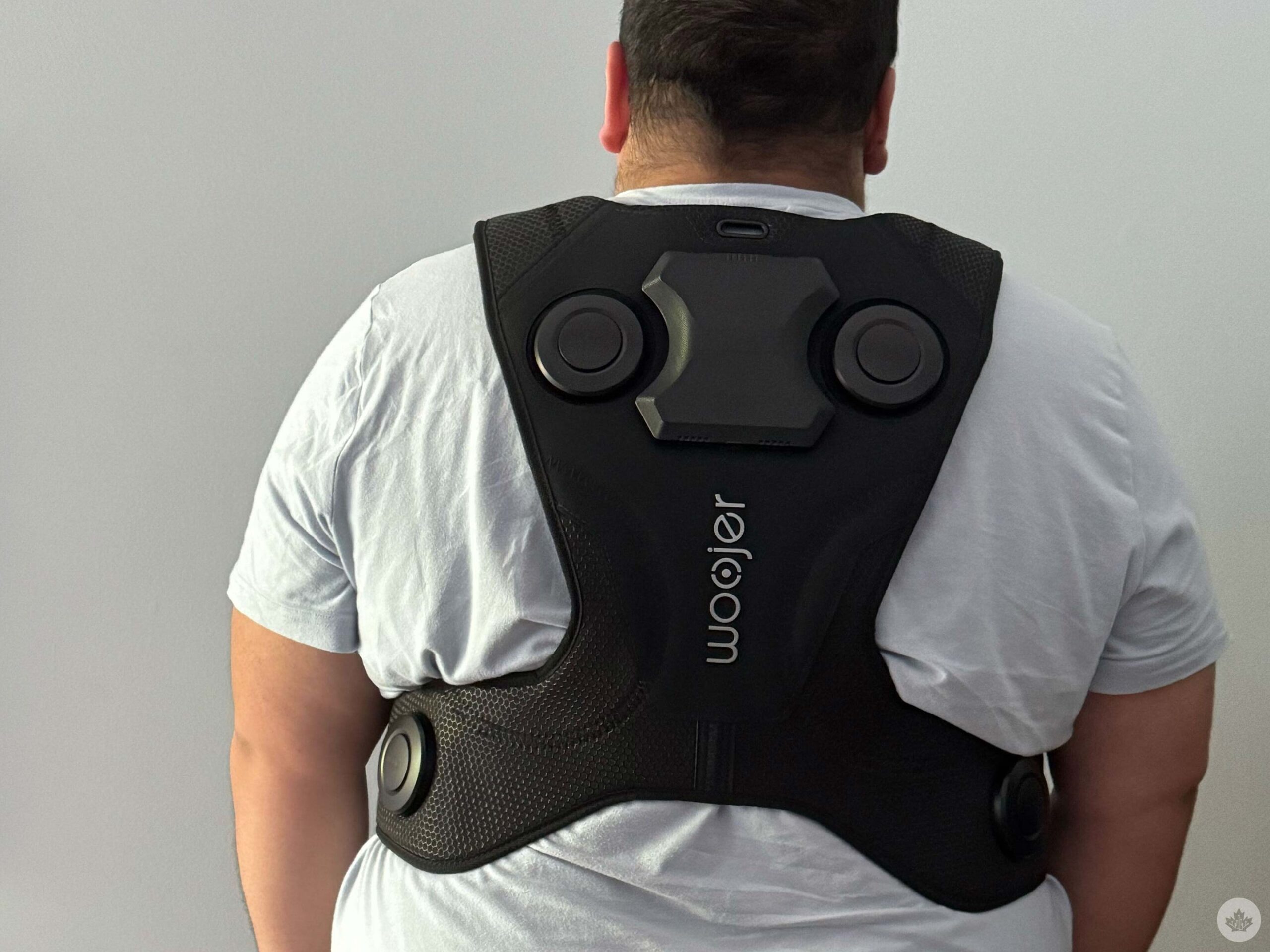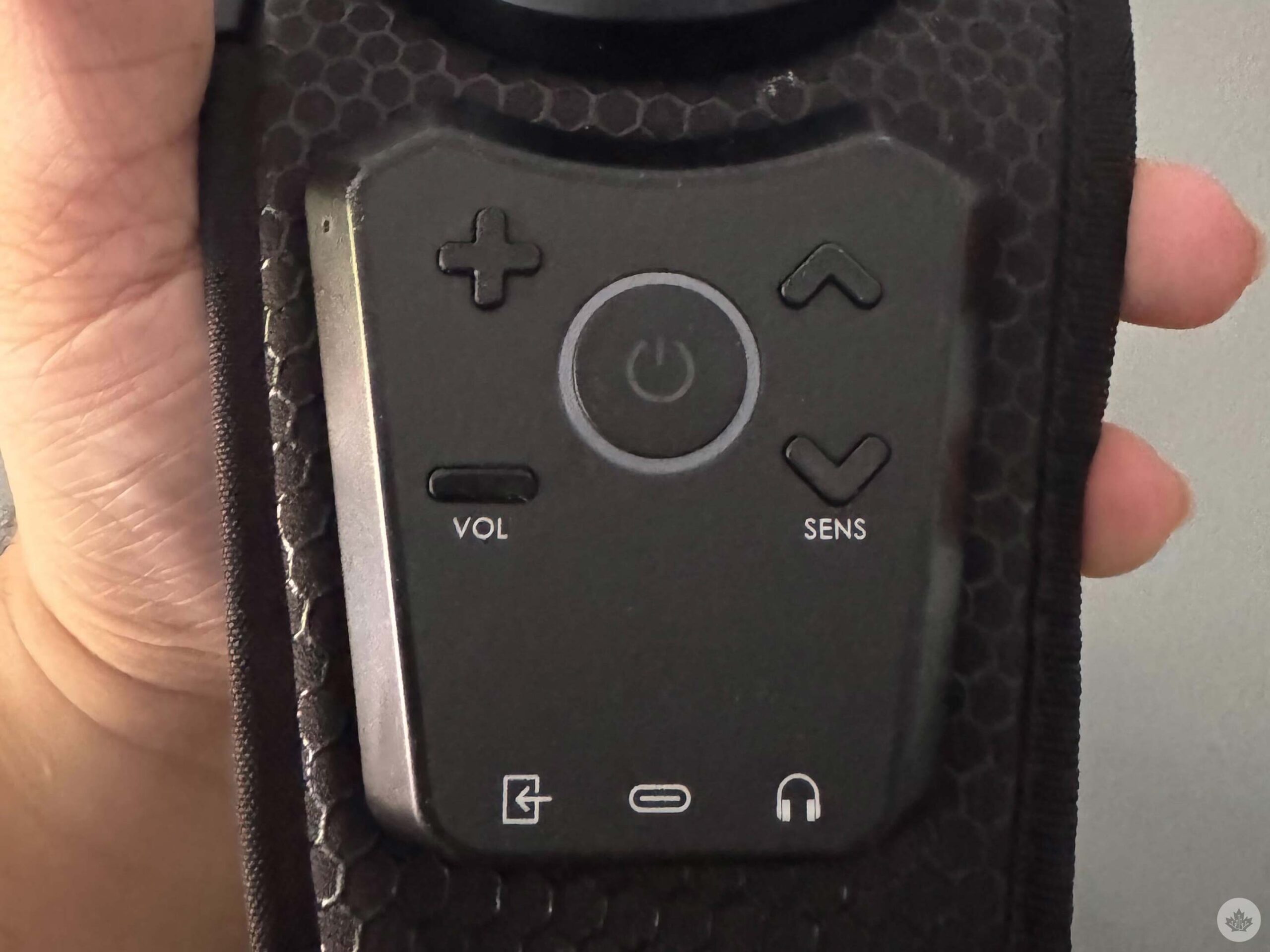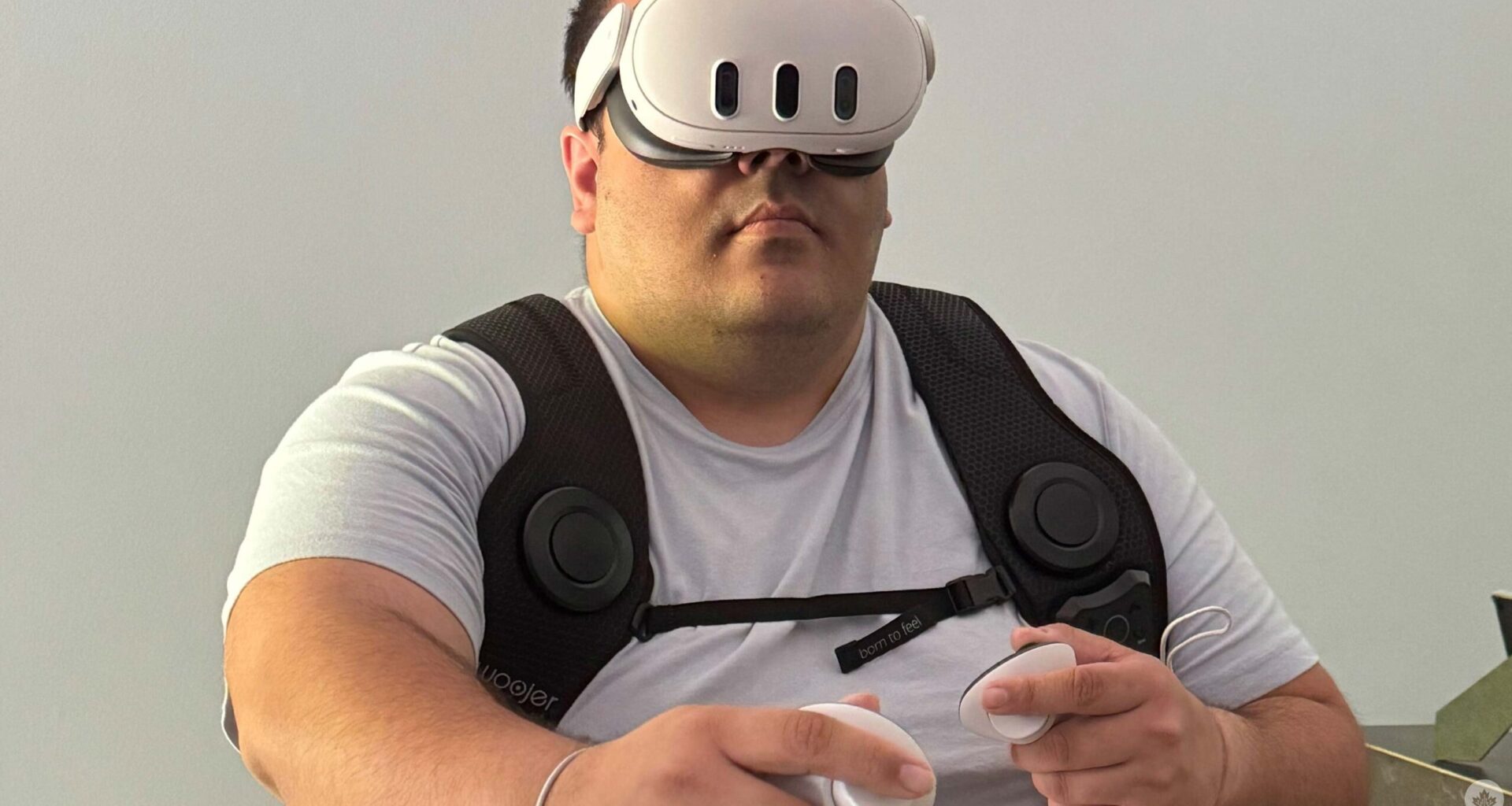The Woojer Vest 3 might be both the silliest and coolest video game peripheral I’ve ever used. It simultaneously is incredibly frivolous and extra while also offering some truly awesome enhancements. It’s undoubtedly a luxury item, so I can’t necessarily recommend it to anyone besides those with a decent amount of disposable income. But if that’s you, there’s a lot to like here.
But I’m getting ahead of myself. What even is the Woojer Vest 3? For the uninitiated, it’s an accessory that you wear that provides haptic feedback in conjunction with the media that you’re consuming. Once you’re wearing it, the vest’s motors will then provide contextual and unique vibrations. While it can be used for movies and TV shows, it’s best applied to video games.
With that said, it takes some getting used to. Maybe it’s because I’m a heavier guy, but I found that the vest never quite fit me right. To be clear, this isn’t an issue with either the vest’s weight (a surprisingly light 1.5kg/3lb) or straps (which have many different lengths and adjusters). Instead, I found that I had some trouble getting all of the oscillators to rest directly on my back, although that could just be because of the stockier contours of my body. Either way, bigger folks keep that in mind.
There are also some inelegant configuration options that need to be taken into account. While you can use Bluetooth to pair your vest to your gaming console, VR headset, TV or the like, Woojer suggests a wired connection to avoid latency. (For what it’s worth, I also had trouble connecting via Bluetooth to anything outside of my phone with the Woojer mobile app, anyway; devices repeatedly just couldn’t find the Vest.)

A wired connection can be done through a 3.5mm audio cable that plugs right into a jack in the little control box on the front of the vest. On the one hand, using such a basic cable option is welcome, even if my vest didn’t actually come with one. (Interestingly, it did include universal adapters for the charger.) But on the other hand, a wired connection can naturally prove cumbersome in VR. This is doubly troublesome since you’ll need a dual-link Bluetooth transmission, meaning the simplest option is to plug wired headphones into the vest. The trade-off, unfortunately, is having up to two cables sticking out of the box.
But even with those imperfect setup options, the Vest 3 still feels really comfortable to wear, and that’s what matters most. I had it on for over an hour at a time and it really didn’t feel noticeable outside of the sweat I accumulated on my back, although I just sweat easily in general. The app also lets you fine-tune haptic intensity and volume settings for further comfort.

All of that is important because the Woojer’s best use case really is for VR. Simply put, it’s transcendent with a headset, adding so much to the immersion and really locking you into whatever you’re doing. I haven’t used my Quest 3 in well over a year, to the point that I found my head getting a bit woozy after putting it on, so having the vest part of the equation being comfortable, at least, was really helpful.
Right off the bat, I found the Vest 3 giving me new ways to appreciate some of my favourite VR experiences, like Beat Saber and Pistol Whip (from Vancouver’s own Cloudhead Games). Given how they’re all about rhythm, it’s hard to understate how much is added through the methodic thump of the beat through the vest. And of course, it only hits even harder for songs with deeper bass. For Beat Saber, I bought the Skrillex DLC pack to see how dubstep would feel, and it’s really something else. You’ll never think of “Bangarang” the same way after experiencing it with the vest.
But the device also works great with other VR games. Having missed it last year, I played around with Batman: Arkham Shadow, and having the vibrations added so much oomph to The Dark Knight’s punches and counters. Arkham Shadow already does such an impressive job of offering a fresh perspective on the popular Freeflow melee combat system of the main Arkham games, and the Vest 3 enhances that even further.
But of course, the Vest 3 has benefits even outside of VR. I tried the device with my Xbox Series X and found a lot to like. The best use case here, undoubtedly, was Call of Duty: Black Ops 6. The sensation of every bullet and explosion adds to the tension of a gunfight, especially given COD’s signature low time to kill. It’s sort of like how the tactility of paintball versus laser tag just adds to the stakes, except the Vest 3 doesn’t hurt when it does its thing. There are even COD-specific Woojer peripherals you can get to further immerse yourself.

Image credit: Activision
Non-military shooters also get that extra oomph thanks to the Vest 3. I tried out Doom: The Dark Ages, and that signature visceral combat, from the explosion of a shotgun to a thunderous slam of a punch, had so much more crunch. You even feel vibrations for something like the lumbering one-two rhythm of the Doom Slayer’s sprint, adding to the feeling that you’re a Juggernaut-like unstoppable force.
Even games that aren’t about combat are enhanced with the vest. For a couple of weeks, I was addicted to Rematch, the new arcade-y Rocket League-esque soccer game from Sifu developer Sloclap. (I’m not into sports games, but this is really good.) For one thing, getting that responding thump when you kick a ball is fun, but it works wonderfully in tandem with the ramp-up of the dynamic music to really emulate the pulse-pounding last-minute sensation of rushing the goal.
With all of that said, not everything feels quite right. I’ve seen reports, including from my colleague Justin at CGM, that some games like the survival VR shooter Into the Radius, don’t have proper compatibility with the Vest 3. They vibrate, but without unique intensities to account for different weaponry. I don’t have that game, so I can’t speak to that, specifically, but I did notice that some games certainly didn’t provide contextual feedback, like when you’re making sharp turns in Forza. Of course, it would be impossible to have bespoke, fine-tuned compatibility for every game, so it’s an understandable, but nonetheless noteworthy, shortcoming. You’ll likely want to do some research on the best games to play with it, especially if you have a favourite I’ve not mentioned.

Image credit: SloClap
All in all, I’ve really enjoyed the Woojer Vest 3. While I do wish some of the setup options worked better, it really does enhance the gaming experience. Admittedly, you’ll get much more out of it in VR, though. Therefore, I would happily suggest VR enthusiasts pick this up and then get some regular console or PC gaming out of it as an added bonus. That said, the enhancements for purely non-VR games are solid but not worth the price of admission alone, especially since you’re still using a controller for them, which removes the extra immersion to a degree. And of course, this sort of technology is still pretty nascent, so hopefully, early adopters will help companies like Woojer continue to improve it over time. But for now, VR aficionados who have the extra money to shell out will get a lot of the Vest 3.
The Vest 3 normally costs $730 but is on sale at the time of writing for $438 — a much more reasonable price for it.
MobileSyrup may earn a commission from purchases made via our links, which helps fund the journalism we provide free on our website. These links do not influence our editorial content. Support us here.

